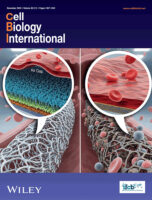Biofouling is a global issue that affects almost all water-based processes across various industries and significantly impacts our daily lives. Conventional biofouling treatments, such as toxic paints or antibiotics, have substantial limitations and challenges. These include the emergence of resistant microbial strains and negative impacts on surrounding ecosystems. Antibiotics often fail to penetrate the dense, protective structure of biofilms, rendering traditional antimicrobial approaches less effective and leading to chronic infections. Although toxic paints initially reduce microbial colonization, they contribute to long-term environmental contamination and harm non-target organisms.
Here, we present a new method of using ultra-slippery surfaces to combat biofouling. Unlike conventional anti-biofouling methods, new technologies such as aerophilic surfaces (a special type of superhydrophobic surface with a stable plastron) and liquid-infused slippery surfaces are promising alternatives for managing biofilms. Aerophilic surfaces create a physical barrier that inhibits biofilm formation by reducing direct contact between aqueous media and solid surfaces (left image). Liquid-infused slippery surfaces enhance anti-biofouling action (right image).
Read the full publication in Cell Biology International. https://doi.org/10.1002/cbin.70065


